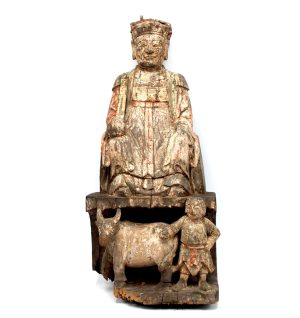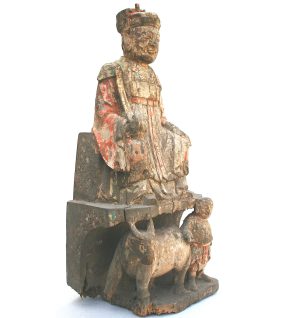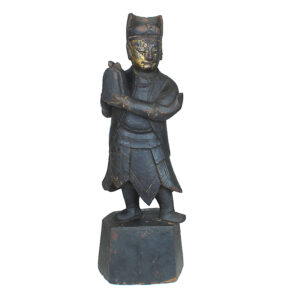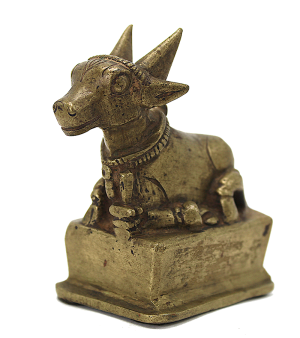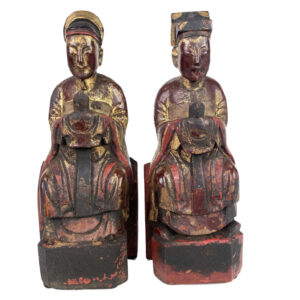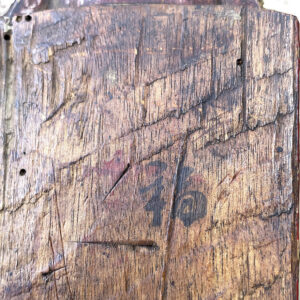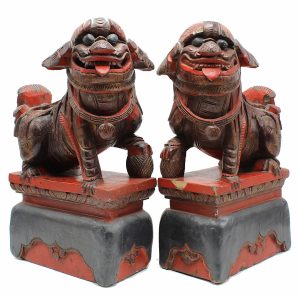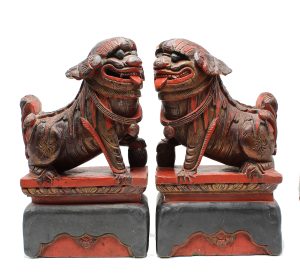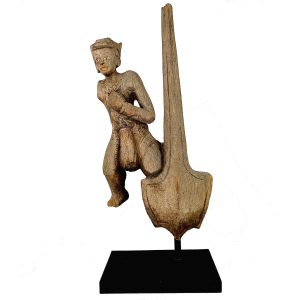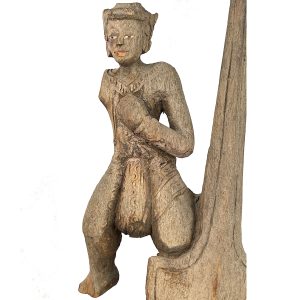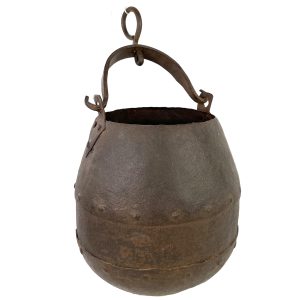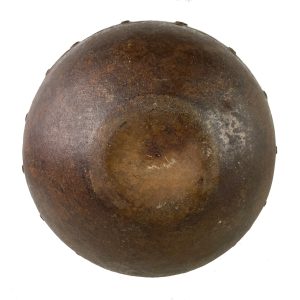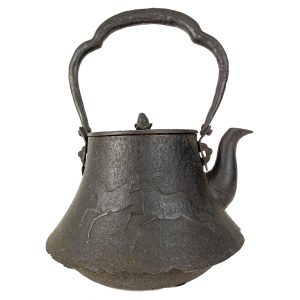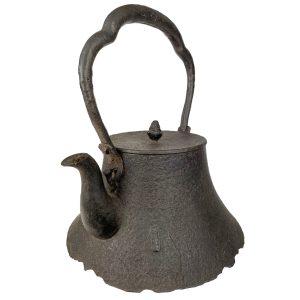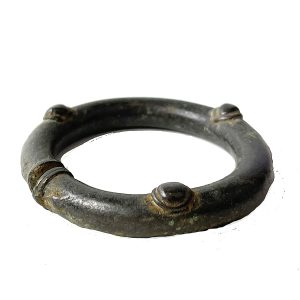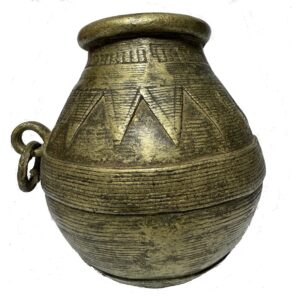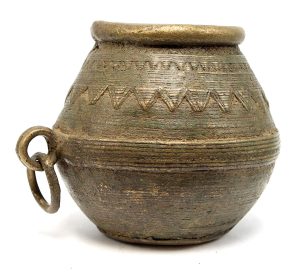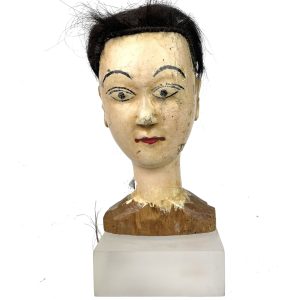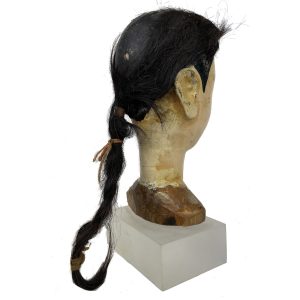Showing 1–12 of 68 results
-
Sale!


$885.00 Original price was: $885.00.$650.00Current price is: $650.00.
H: 14.25″ W: 7.125″ D: 4.8″ | FREE SHIPPING WITHIN CONTINENTAL U.S.
Extremely rare provincial carving with a Taoist official on top above the legendary “Spring Ox,” accompanied by the Taoist Earth God “Herd Boy” who each spring ritually “wakes up the earth” by symbolically beating the Spring Ox with sticks.
-
Sale!


$435.00 Original price was: $435.00.$365.00Current price is: $365.00.
H: 15.5″. W: 5.5″. D: 4.24″ | FREE SHIPPING WITHIN CONTINENTAL U.S.
Taoist attendant holding an offerings tied with ribbons that symbolized longevity for generations. Some gilt and lacquer has naturally darkened from years age and incense.
-
Sale!


$155.00 Original price was: $155.00.$125.00Current price is: $125.00.
Ht: 3.5″. W: 1.75″ D: 2.5″ FREE SHIPPING WITHIN CONTINENTAL U.S.
Lost-wax one of a kind brass Nandi figurine on a high pedestal, is incised with decorative detailed adornments on his head and neck with beautiful patina from long daily use in home Hindu pujas.
-
Sale!


$850.00 Original price was: $850.00.$650.00Current price is: $650.00.
H: 7.5″ W: 2.875″ D: 2″ | FREE SHIPPING WITHIN CONTINENTAL U.S.
VA’s most unique and finely crafted Kitchen God couple. Beautifully carved, clasping hu tablets, approachable features, smiling lips. Painted character on base wish for “happiness.” Add positive chi, enhance feng-shui.Unique house warming/wedding gifts.
-
Sale!


$995.00 Original price was: $995.00.$695.00Current price is: $695.00.
H: 12″ D: 7″ D: 7.75″ | FOR SHIPPING INFORMATION CONTACT US AT 213-568-3030
This very fine pair of antique carved males fu lions represents the dual nature of these mythical animals: as protective images they are powerful and fierce, as Buddhist images they are whimsical with smiling faces, dangling tongues, hanging ears and bushy tails. They are extremely well carved with harnesses and bells around their necks, detailed manes and tails on high intricately decorated bases to signal their importance. Perfect for enhancing feng shui in a home or office, large finely decorative wood pairs like this are extremely hard to find.
-
Sale!


$450.00 Original price was: $450.00.$315.00Current price is: $315.00.
H: 23″ W: 10″ D: 5.5″ | CALL 213-568-3030 OR EMAIL [email protected] FOR SHIPPING
This fanciful teak carving is a Nat placed atop a large shield wearing a sarong and eyes with inset mother of pearl. Although of shamanistic origins, they are still in Buddhist temples, pagodas, government buildings, and in nat centers throughout Burma.
-
Sale!


$150.00 Original price was: $150.00.$85.00Current price is: $85.00.
H: 12.75″ Dia: 7″ | FREE SHIPPING IN CONTINENTAL U.S.
Simple attractive antique welded Indian iron pot with warm rust color patina. Clear lines indicate where pieces were joined in its construction. Egg shape with a rounded bottom for easy pouring, it has a warmth to add charm to any room, especially a kitchen or filled with dried flowers.
-
Sale!


$695.00 Original price was: $695.00.$550.00Current price is: $550.00.
Ht: 12.5″ W: 10″ D: 9.5″ | CALL 213-568-3030 OR EMAIL [email protected] FOR SHIPPING COST
Made in the Meiji era (1868-1912),this hand crafted antique Japanese cast iron tetsubin teapot has an unusual decorative handle and curved spout and has a beautiful relief design of galloping horses. Horses have been revered creatures in Japanese culture that embody grace, power and nobility. The knob on the lid probably represents a lotus, the Buddhist symbol of purity and enlightenment. As with all antiques, these pieces are purely decorative for display purposes only.
-


$395.00
Prehistoric Thai Bronze Age jewelry, adzes and tools have been found all over Thailand. Excavations from various soil levels show many sites had been inhabited for millennia. They confirm the existence of an early, well-developed metallurgical tradition of bronze digging and cutting tools, adzes (ancient axe like tools to cut wood), adult and child’s bronze…
-
Sale!


$165.00 Original price was: $165.00.$125.00Current price is: $125.00.
H: 4.25” Dia: 4” | FREE SHIPPING IN CONTINENTAL U.S.
Dhorka brass lost wax grain and rice measuring bowl. One-of-a-kind intricately decorated with horizontal and triangular striations. Bowls were symbol of Hindu goddess Lakshmi placed on home altars for puja.
-
Sale!

$155.00 Original price was: $155.00.$125.00Current price is: $125.00.
H: 3.875” Dia: 4.125” | FREE SHIPPING IN CNTINENTAL U.S.
Dhorka brass lost wax grain and rice measuring bowl. One-of-a-kind intricately decorated with horizontal and triangular striations. Bowls were symbol of Hindu goddess Lakshmi placed on home altars for puja.
-
Sale!


$295.00 Original price was: $295.00.$195.00Current price is: $195.00.
H: 8.5″ W: 4″ D: 2.75″ | FREE SHIPPING WITHIN CONTINENTAL U.S.!
Antique Chinese puppets were often made in several parts with removable heads. This antique carved head of a beauty has delicately painted features and an animal hair braided down the back. Since there is an area without hair towards the back, she likely originally wore a hat or headdress. A hole on top probably accommodated strings.
End of content
End of content

